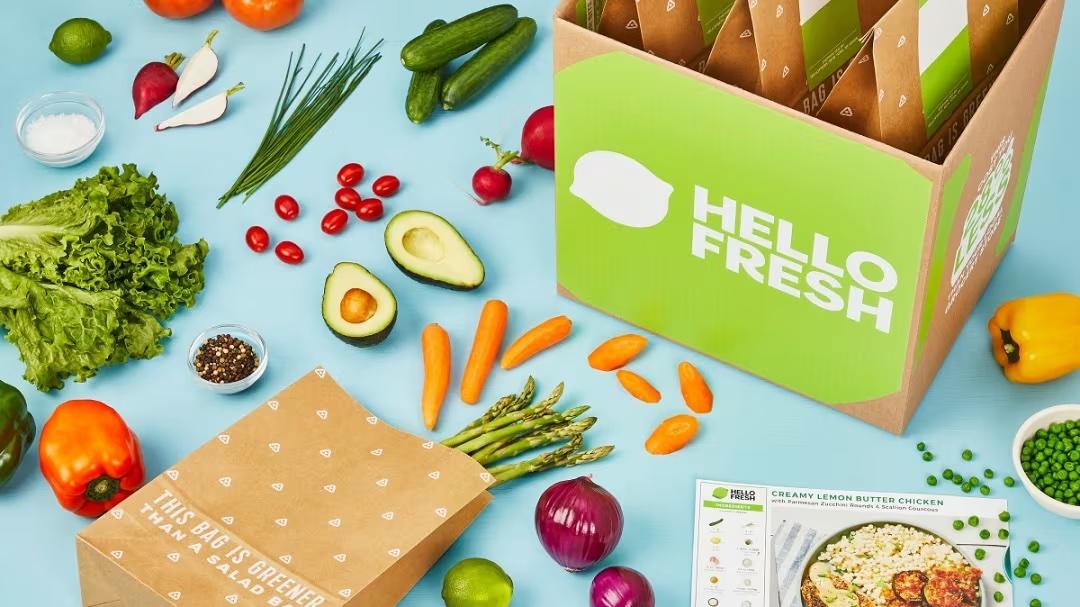In a world where culinary preferences vary as much as cultural identities, the meal kit delivery service HelloFresh has embarked on an ambitious journey of international expansion. With a mission to simplify home cooking and cater to diverse tastes, HelloFresh now serves millions of customers across the globe. Though, with such widespread reach arises a critical question: how does the quality of HelloFresh’s offerings compare in different countries? this article delves into the nuances of HelloFresh’s international operations, exploring the factors that influence product quality—from ingredient sourcing to recipe formulation. Join us as we navigate the complexities of flavor, freshness, and customer satisfaction in the ever-evolving landscape of meal kits, uncovering the subtleties that set apart this global food phenomenon.
Understanding HelloFresh’s Global Strategy for Quality assurance
HelloFresh, as a global entity, has strategically tailored its quality assurance practices to meet the diverse culinary tastes and regulatory requirements of various countries. By establishing local partnerships with suppliers, they ensure that ingredients are not only fresh but also culturally relevant to their consumers. These collaborations help maintain consistency in quality across international markets while adhering to strict health and safety standards set by local governments. This adaptability is pivotal in cultivating customer trust and loyalty.
Furthermore, HelloFresh employs a rigorous quality control framework that includes:
- Regular Audits: Conducting frequent checks on suppliers to ensure compliance with quality standards.
- Consumer Feedback Loops: Actively engaging customers to gather insights on their experiences with products across different regions.
- Local Adaptation: Modifying recipes based on regional tastes and dietary restrictions to cater to local preferences.
This multi-faceted approach enables HelloFresh to navigate the complexities of international quality assurance while delivering a consistently high standard of service globally.
| Country | Quality Assurance Focus | local Supplier Engagement |
|---|---|---|
| USA | Freshness & Organic Options | Strong connections with local farms |
| Germany | Regulatory Compliance | Partnerships with certified organic producers |
| Australia | Seasonal Ingredients | Collaborations with local fisheries and growers |

Analyzing Regional Menu Variations and Their Impact on Customer Satisfaction
The culinary landscape of HelloFresh’s international menu options showcases a diverse tapestry of flavors and ingredients that vary considerably by region. In countries like Germany, customers often enjoy traditional flavors, integrating local staples such as Bratwurst and Sauerkraut into meal kits, while a more Mediterranean influence is prominent in regions like Spain, where dishes frequently feature chickpeas and fresh seafood.This localization not only enhances the appeal of the meals but also allows customers to connect with their cultural heritage, fostering a sense of pride and satisfaction. Moreover, the ingredient sourcing practices in each region play a pivotal role, contributing to the overall quality of the meal experience.
Analyzing customer satisfaction metrics reveals a fascinating correlation between regional menu variations and perceived quality.In a survey conducted across multiple countries, customer feedback highlighted several key points:
- Flavor Authenticity: 80% of Spanish customers rated meal satisfaction higher when local cuisine was emphasized.
- Ingredient Freshness: 70% of customers in Italy noted that locally sourced ingredients significantly enhanced their dining experience.
- Customization Options: More than 65% of French consumers appreciated the ability to select meals tailored to regional preferences.
| Country | Popular Ingredients | Customer Satisfaction Rate |
|---|---|---|
| Germany | Bratwurst, Sauerkraut | 85% |
| Spain | Chickpeas, Fresh Seafood | 90% |
| Italy | Pasta, Tomato Sauce | 88% |
| France | Cheese, Baguettes | 92% |

Evaluating Supply Chain Differences and Their Influence on Meal Quality
The evaluation of supply chain differences reveals how various factors can significantly affect meal quality in international markets. For a company like HelloFresh, sourcing ingredients involves navigating *local climates*, *seasonal availability*, and *regional farming practices*. These elements contribute to the ultimate flavor profile and freshness of each meal kit. Consider the following aspects that vary from country to country:
- Ingredient Sourcing: Local farms produce fresher, more flavorful ingredients compared to imports.
- Transportation Methods: Efficient logistics can minimize spoilage and maintain ingredient integrity.
- Food Safety Regulations: Different countries have varied standards, impacting the quality assurance process.
Additionally, customer expectations and cultural preferences play a pivotal role in shaping product offerings. For instance, HelloFresh must adapt its recipes and meal kits to align with regional tastes, which often involves sourcing unique local ingredients. This can sometimes led to inconsistency if not managed effectively. the table below illustrates comparative elements in meal quality across select countries:
| Country | Ingredient Freshness | Meal Satisfaction Rating | Adaptation of Local Cuisine |
|---|---|---|---|
| USA | High | 4.5/5 | Moderate |
| Germany | Very High | 4.7/5 | High |
| Australia | Moderate | 4.2/5 | Medium |
| Canada | High | 4.4/5 | low |

Strategic Recommendations for Enhancing Consistency Across International Markets
To strengthen its foothold in diverse international markets, HelloFresh shoudl prioritize enhanced operational coherence through the implementation of standardized quality control protocols. By establishing clear benchmarks for ingredient sourcing, preparation methods, and delivery processes across countries, the company can ensure a uniform experience for consumers, nonetheless of location. This framework should include:
- Centralized supplier audit systems to maintain consistent standards.
- Regular training sessions for culinary teams worldwide to align on quality expectations.
- Localized resource distribution that adheres to global supply chain efficiencies.
Additionally, leveraging technology can play a critical role in streamlining operations. Investing in a global inventory management system can provide real-time data analysis for tracking ingredient freshness and availability, ultimately reducing discrepancies. The company should consider collaborative platforms for sharing best practices among country teams, thereby fostering a culture of continuous improvement. Implementing feedback loops from customers can also enhance service consistency, allowing HelloFresh to adapt offerings based on localized preferences while remaining true to its core brand identity.
| Market | Quality Focus Area | Standardization Level |
|---|---|---|
| Germany | Ingredient Sourcing | High |
| USA | Packaging & Delivery | Medium |
| Australia | Recipe Innovation | Low |
Future Outlook
HelloFresh’s international expansion showcases a culinary journey that transcends borders, adapting to regional tastes while striving to maintain a consistent quality. As we’ve explored,the brand’s ability to resonate with diverse audiences highlights not just its adaptability but also its commitment to providing fresh,convenient meal solutions. While variations in ingredient sourcing and recipe styles may emerge across different countries, the core beliefs of delivering wholesome meals remains intact.
Ultimately, the true measure of HelloFresh’s success may lie not only in its global reach but in how effectively it nourishes the diverse palates of its customers around the world. As the company continues to expand and innovate, it will be fascinating to observe how it navigates the delicate balance between maintaining quality and embracing the unique culinary identities of each market.The journey is far from over; with each new region, there’s an opportunity for growth, engagement, and, most importantly, a delicious meal shared across the table.
